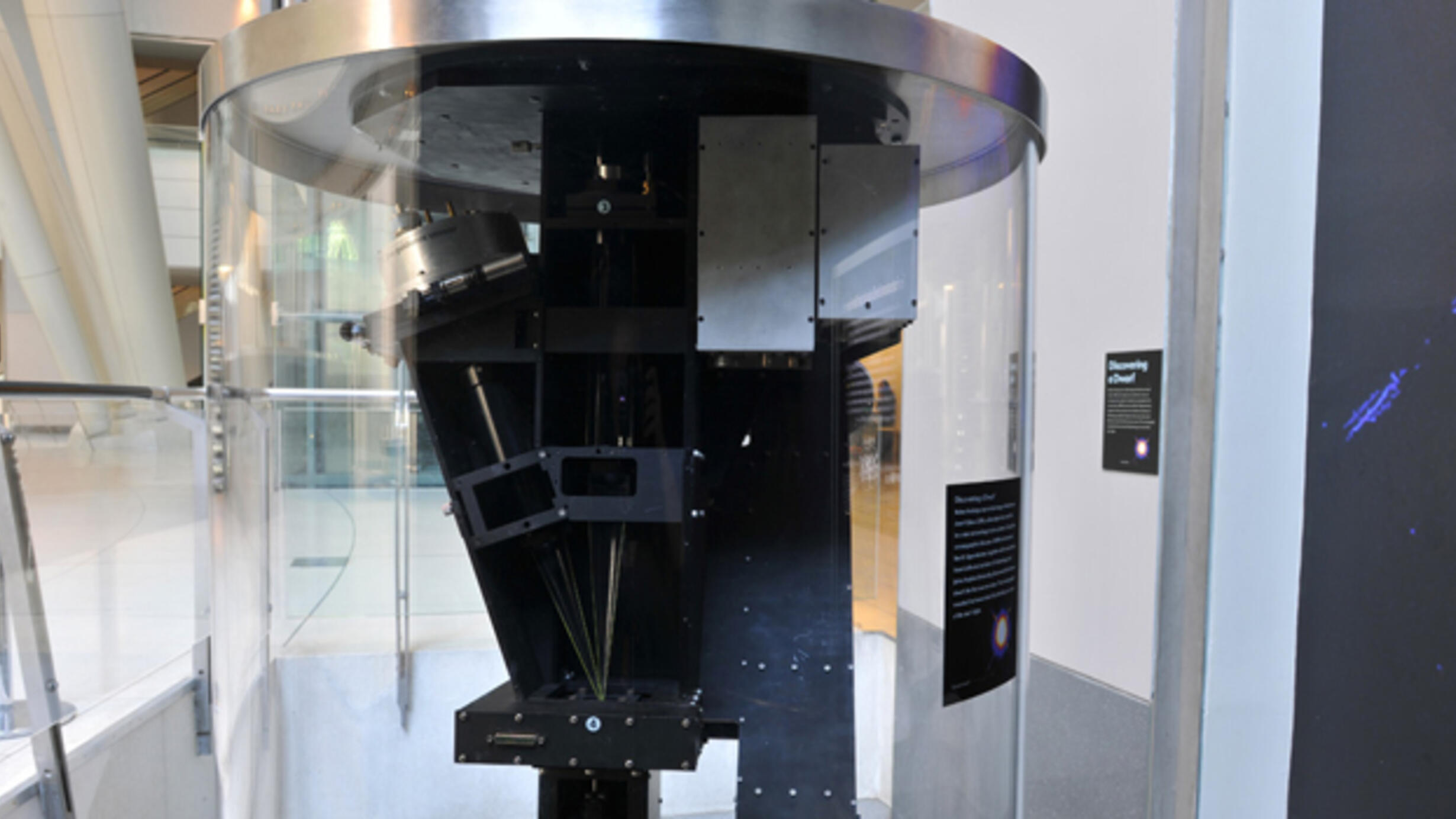Coronagraph
Part of Hall of the Universe.
Part of Hall of the Universe.
 AMNH/D. Finnin
AMNH/D. Finnin How It Works
Inside the coronagraph, a series of mirrors and lenses position and focus the light. Carefully placed disks and rings block out 98.5% of the star's light, enabling astronomers to see dim objects near the star.
Numbers correspond to labels on coronagraph
1) Light enters from the telescope at top.
2) Mirror reflects light upwards (visible on back of instrument)
3) Mirror reflects light downwards
4) Reflective central disk blocks 95% of starlight
5) Outer ring and central disk block light that bends around central disk
6) Image reflected to right
7) Image reflected upwards
8) Camera receives final image
Closer to the Star
Better coronagraphs will soon allow researchers to look for planets around other stars. The Lyot Project coronagraph, built at this Museum, has already detected a starlike object—possibly a brown dwarf—about as far from the star as Pluto is from the Sun.